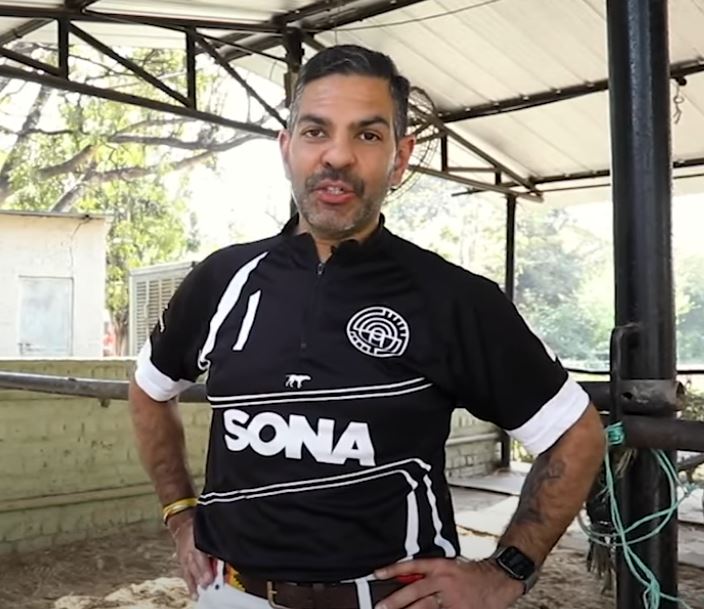Sunjay Kapur has become one of India’s most significant industrialists in the last ten years, skillfully fusing traditional wisdom with modern tactics. There was a noticeable void in social and business circles following his untimely death in June 2025. Since then, there has been intense interest in his estimated net worth of ₹10,300 crore, or $1.2 billion, particularly in light of succession concerns surrounding Sona Comstar, the billion-dollar auto parts company he turned around.
After his father, Surinder Kapur, passed away in 2015, Sunjay took over as Sona Comstar’s leader at a critical juncture. At a time when e-mobility was just beginning to gain traction in international markets, he steered the company toward electric vehicle components. This was a very creative move that put the company in a position to supply parts that are in high demand for commercial vehicles, three-wheelers, and electric scooters. Not only was the company’s entry into markets like Mexico, Serbia, and the US opportunistic, but it was also strategically positioned to take advantage of the inevitable and widespread adoption of EVs in the future.
Sunjay Kapur – Personal and Professional Profile
| Category | Details |
|---|---|
| Full Name | Sunjay Kapur |
| Birth Year | 1971 |
| Death Date | June 12, 2025 |
| Age at Death | 53 |
| Place of Death | London, United Kingdom |
| Nationality | American (Indian Origin) |
| Education | BBA, University of Buckingham |
| Profession | Industrialist, Chairman of Sona Comstar |
| Known For | Automotive Leadership, Karisma Kapoor’s Ex-Husband |
| Net Worth (2025) | ₹10,300 crore / $1.2 billion |
| Company | Sona Comstar (Auto Components) |
| Marriages | Nandita Mahtani, Karisma Kapoor, Priya Sachdev |
| Children | 4 (Samaira, Kiaan, Azarias, one unnamed) |
| Key Inheritance | Bonds for children, real estate, corporate shares |
By making deliberate diversification and strategic investments, Kapur made sure that Sona Comstar’s market capitalization increased to about ₹31,000 crore by the beginning of 2025. Kapur’s strategy was very different from many Indian conglomerates’ struggles with global competitiveness; instead of relying solely on scale, he relied on technical agility and global manufacturing efficiency. Because of his extremely effective leadership style, production was streamlined while maintaining a constant level of product quality. Even rivals were impressed by his use of automation to increase output without sacrificing worker welfare.
Following his death, a fresh level of focus has emerged on his expansive estate rather than the business. According to Forbes, his personal wealth decreased from ₹13,000 crore at its highest point to ₹10,300 crore at the time of his passing. This decline was ascribed to market fluctuations and reinvestment cycles during Sona Comstar’s rapid foray into EV components. Even with this cut, Kapur was still one of the subcontinent’s most wealthy industrialists.
His success in business was frequently overshadowed by his personal life. His 2003 marriage to Bollywood actress Karisma Kapoor catapulted him into the entertainment industry. Samaira and Kiaan, the two children of their 2016 divorce, are now at the center of ongoing inheritance debates. In order to ensure ongoing financial support, Kapur arranged for both children to receive ₹14 crore in bonds each, with monthly interest payments of ₹10 lakh, according to news reports and public court filings. These were indications of thoughtful legacy planning rather than reactive actions.
A rare legal precedent in cases involving billion-dollar estates was also established when the Supreme Court granted Kapoor the family home in Mumbai during the divorce proceedings. Despite the well-publicized breakup, observers observed that Sunjay continuously supported his kids in ways that were both legally required and emotionally satisfying—a unique equilibrium in these situations.
Another son, Azarias, was born into Kapur’s third marriage to Priya Sachdev. The question of who will take over Sona Comstar has become urgent since no official successor has been named. Although no statement has confirmed long-term changes, reports indicate his sisters may take on temporary board positions. In anticipation of a sudden change in leadership, Sunjay reorganized portions of the company to increase its resilience during the pandemic—a move that now seems remarkably prescient.
Tragically, his death was out of the ordinary. He reportedly swallowed a bee while playing polo in London and experienced anaphylactic shock. Even though that incident was strange, the legacy discussion that followed took center stage. Sunjay Kapur had integrated Sona Comstar into international supply chains through alliances, patents, and expandable facilities. Because of this, his absence was both structurally significant for the company and emotionally upsetting for stakeholders.
Kapur’s departure provides a warning as well as a guide for Indian family enterprises. Due to a lack of planning or a generational mismatch, many legacy businesses fail after the founder passes away. However, Sunjay’s strategy—gifting bonds, acquiring family property, and creating the company’s balance sheet—showed that having foresight is especially advantageous. His kids won’t inherit confusion or chaos, even if they aren’t yet prepared to assume leadership roles.
The public’s attitude toward his legacy has been positive. Industrialists, celebrities, and foreign partners have paid tribute to him, highlighting not only his business acumen but also his exceptional capacity to remain dignified in the face of intense public scrutiny. Due in large part to his calm public persona and regard for family privacy, his relationship with Karisma Kapoor, even though it ended, never descended into tabloid vulgarity.
Professional leadership is now essential to Sona Comstar’s future. According to analysts, the company will probably switch to a board-managed structure until the following generation reaches adulthood. Despite being unanticipated, this change seems to be manageable because of Kapur’s organized estate planning and clear documentation. He made the company incredibly resilient, able to withstand setbacks even when he was not there, by fusing strategic alliances with scalable operations.


